Saluting the centurions
Today India is celebrating its 66th Republic day. It was on January 26th, 1950 that the constitution of India came into force and India became a truly Sovereign, Democratic and Republic country. On this day, India finally enjoyed the freedom of spirit, rule of law and fundamental principle of Governance. Indians experienced autonomy from this date.
Today I want to mention those few centenarian Indian companies who have seen it all – the good and the bad in this land. We need to salute those companies which have seen a century or more in India. They have contributed to the nation’s economic growth and have witnessed the two World Wars, the Great Depression, India’s independence struggle, many natural disasters, the licence-permit raj, controls on foreign exchange and expansion, and the globalization reforms of the 1990s. Change is simply inevitable. Change is something that will happen no matter how hard we try to stop it. Change is a part of the world we live in. These century old companies have seen it all, and they modified themselves along the way to continue doing business. I would say that they are experts in managing the change. They sometimes fumbled in their journeys but had the grit to turn around. Today they are still standing tall, and hence we need to salute them!
 Jessop & CO 1788: This two century old company’s roots go back to 1788 when Breen & Company was founded in Calcutta. In 1820, Henry and George, sons of William Jessop acquired Breen & Company on behalf of Butterfly Company established in Derbyshire, England in 1790. These two companies merged together to become Jessop & Company. Subsequently in 1973, the company was taken over by the Indian Government and Jessop became a Government of India undertaking. In 1986, with the formation of Bharat Bhari Udyog Nigam Limited (BBUNL) Jessop became a Public Sector Holding Company under administrative control of Department of Heavy Industry, Ministry of Industry, and Government of India. Statutorily Jessop became a subsidiary of the Holding Company.
Jessop & CO 1788: This two century old company’s roots go back to 1788 when Breen & Company was founded in Calcutta. In 1820, Henry and George, sons of William Jessop acquired Breen & Company on behalf of Butterfly Company established in Derbyshire, England in 1790. These two companies merged together to become Jessop & Company. Subsequently in 1973, the company was taken over by the Indian Government and Jessop became a Government of India undertaking. In 1986, with the formation of Bharat Bhari Udyog Nigam Limited (BBUNL) Jessop became a Public Sector Holding Company under administrative control of Department of Heavy Industry, Ministry of Industry, and Government of India. Statutorily Jessop became a subsidiary of the Holding Company.
In 2003, Government of India divested its stake in Jessop & Co. Ltd under privatization programme and sold its 72% stake to Ruia group owned by Pawan Kumar Ruia, who turned it into a profit making entity. This company is in production of construction equipment and road building. During the last two centuries, the company has consistently modernized and streamlined its production facilities by keeping abreast with the latest technology and has introduced many new products for core sector industries in the country. Kudos to this 2 centuries old company!
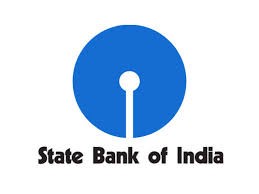 State Bank of India 1806: The evolution of State Bank of India can be traced back to the first decade of the 19th century. It began with the establishment of the Bank of Calcutta in Calcutta, on 2 June 1806. The bank was redesigned as the Bank of Bengal, three years later, on 2 January 1809. It was the first ever joint-stock bank of the British India, established under the sponsorship of the Government of Bengal. Subsequently, the Bank of Bombay (established on 15 April 1840) and the Bank of Madras (established on 1 July 1843) followed the Bank of Bengal. These three banks dominated the modern banking scenario in India, until when they were amalgamated to form the Imperial Bank of India, on 27 January 1921.
State Bank of India 1806: The evolution of State Bank of India can be traced back to the first decade of the 19th century. It began with the establishment of the Bank of Calcutta in Calcutta, on 2 June 1806. The bank was redesigned as the Bank of Bengal, three years later, on 2 January 1809. It was the first ever joint-stock bank of the British India, established under the sponsorship of the Government of Bengal. Subsequently, the Bank of Bombay (established on 15 April 1840) and the Bank of Madras (established on 1 July 1843) followed the Bank of Bengal. These three banks dominated the modern banking scenario in India, until when they were amalgamated to form the Imperial Bank of India, on 27 January 1921.
An important turning point in the history of State Bank of India is the launch of the first Five Year Plan of independent India, in 1951. The Plan aimed at serving the Indian economy in general and the rural sector of the country, in particular. Until the Plan, the commercial banks of the country, including the Imperial Bank of India, confined their services to the urban sector. Moreover, they were not equipped to respond to the growing needs of the economic revival taking shape in the rural areas of the country. Therefore, in order to serve the economy as a whole and rural sector in particular, the All India Rural Credit Survey Committee recommended the formation of a state-partnered and state-sponsored bank.
The All India Rural Credit Survey Committee proposed the takeover of the Imperial Bank of India, and integrating with it, the former state-owned or state-associate banks. Subsequently, an Act was passed in the Parliament of India in May 1955. As a result, the State Bank of India (SBI) was established on 1 July 1955. This resulted in making the State Bank of India more powerful, because as much as a quarter of the resources of the Indian banking system were controlled directly by the State. Later on, the State Bank of India (Subsidiary Banks) Act was passed in 1959. The Act enabled the State Bank of India to make the eight former State-associated banks as its subsidiaries.
 The Times of India 1838: The Times of India brought out its first edition on 3rd November 1838 as The Bombay Times and Journal of Commerce. The paper then used to get published on Wednesdays and Saturdays under the direction of Raobahadur Narayan Dinanath Velkar, a Maharashtrian Reformist. It used to contain news from Britain and the world, as well as the Indian subcontinent. In 1850, it began to publish daily editions.
The Times of India 1838: The Times of India brought out its first edition on 3rd November 1838 as The Bombay Times and Journal of Commerce. The paper then used to get published on Wednesdays and Saturdays under the direction of Raobahadur Narayan Dinanath Velkar, a Maharashtrian Reformist. It used to contain news from Britain and the world, as well as the Indian subcontinent. In 1850, it began to publish daily editions.
The Times of India has gone through many ownership changes until 1892, when Thomas Bennett and Frank Morris Coleman, who drowned in the 1915 sinking of the SS Persia, acquired the newspaper through their new company, Bennet, Coleman & Co. Ltd. Today Times of India is the largest mass media company in India. The company remains a family-owned business as the descendants of Sahu Jain family controls majority stake in Times Group. The Times Group has over 11,000 employees and revenue exceeding $1.5 billion. It is considered India’s pride. Its detailed news coverage with seriousness and intellectual analysis has made it one of the leading daily newspapers. After Indian independence, this newspaper’s insistence on accuracy, its avoidance of sensationalism, its serious tone, and its coverage of international news enhanced its prestige in India and in the world. Millions of Indians cannot start their day without having a glimpse of this newspaper. In spite of so many substitutes to this brand, it still enjoys the leadership position.
 Dabur 1884: The name is derived from Daktar Burman and the company was founded in 1884 which is today India’s largest Ayurvedic medicine & related products manufacturer. Dabur was founded by Dr. SK Burman, a physician in West Bengal, to produce and dispense Ayurvedic medicines. German company Fresenius SE bought a 73.27% equity stake in Dabur Pharma in June 2008 at Rs76.50 a share. The German company had also purchased another 17.62% shares from the market through an open offer at the same price. Dr. Burman designed Ayurvedic medication for diseases such as cholera and malaria. Dabur’s Ayurvedic Specialities Division has over 260 medicines for treating a range of ailments and body conditions, from common cold to chronic paralysis, http://www.papsociety.org/priligy-dapoxetine/. Dabur International, a fully owned subsidiary of Dabur India formerly held shares in the UAE based Weikfield International, which it disposed of on 25 June 2012.
Dabur 1884: The name is derived from Daktar Burman and the company was founded in 1884 which is today India’s largest Ayurvedic medicine & related products manufacturer. Dabur was founded by Dr. SK Burman, a physician in West Bengal, to produce and dispense Ayurvedic medicines. German company Fresenius SE bought a 73.27% equity stake in Dabur Pharma in June 2008 at Rs76.50 a share. The German company had also purchased another 17.62% shares from the market through an open offer at the same price. Dr. Burman designed Ayurvedic medication for diseases such as cholera and malaria. Dabur’s Ayurvedic Specialities Division has over 260 medicines for treating a range of ailments and body conditions, from common cold to chronic paralysis, http://www.papsociety.org/priligy-dapoxetine/. Dabur International, a fully owned subsidiary of Dabur India formerly held shares in the UAE based Weikfield International, which it disposed of on 25 June 2012.
Today, Dabur India Ltd is one of India’s leading FMCG Companies with Revenues of over Rs 7,073 Crore & Market Capitalization of US $5 Billion. Building on a legacy of quality and experience of over 130 years, Dabur is today India’s most trusted name and the world’s largest Ayurvedic and Natural Health Care Company.
 Britannia 1892: The company was established in 1892, with an investment of Rs.295. Initially, biscuits were manufactured in a small house in central Kolkata. Later, the endeavor was acquired by the Gupta brothers mainly Nalin Chandra Gupta, a renowned attorney, and operated under the name of “V.S. Brothers.” In 1918, C.H. Holmes, an English businessman in Kolkata, was taken on as a partner and The Britannia Biscuit Company Limited (BBCo) was launched. Kerala businessman Rajan Pilai secured control of the group in the late 1980s, becoming known in India as the ‘Biscuit King’. In 1993, the Wadia Group acquired a stake in Associated Biscuits International (ABIL), and became an equal partner with Group Danon in Britannia Industries Limited.
Britannia 1892: The company was established in 1892, with an investment of Rs.295. Initially, biscuits were manufactured in a small house in central Kolkata. Later, the endeavor was acquired by the Gupta brothers mainly Nalin Chandra Gupta, a renowned attorney, and operated under the name of “V.S. Brothers.” In 1918, C.H. Holmes, an English businessman in Kolkata, was taken on as a partner and The Britannia Biscuit Company Limited (BBCo) was launched. Kerala businessman Rajan Pilai secured control of the group in the late 1980s, becoming known in India as the ‘Biscuit King’. In 1993, the Wadia Group acquired a stake in Associated Biscuits International (ABIL), and became an equal partner with Group Danon in Britannia Industries Limited.
Britannia is known for its most dramatic corporate sagas; after a most bitter corporate board room squabble Pillai gave away the control to Wadia and Danone. Today, it is one of the biggest food products company.
 Century Textile & Industries 1897: In 1897, the company was established as Century Textiles Limited and listed on BSE with its Registered Office at Mumbai. Till 1951, the Company operated only one Cotton Textile Mill in Mumbai. In 1956, Company began its Rayon Division at Kalyan, near Mumbai to manufacture Viscose Filament Rayon Yarn. The Company diversified into production of Cement by establishing its first cement plant at Baikunth, near Raipur in 1974.
Century Textile & Industries 1897: In 1897, the company was established as Century Textiles Limited and listed on BSE with its Registered Office at Mumbai. Till 1951, the Company operated only one Cotton Textile Mill in Mumbai. In 1956, Company began its Rayon Division at Kalyan, near Mumbai to manufacture Viscose Filament Rayon Yarn. The Company diversified into production of Cement by establishing its first cement plant at Baikunth, near Raipur in 1974.
The textile mill stopped the production in Mumbai in 2006 due to increase in operating costs and labor problems. The new plant in Jhagadia, Distt. Bharuch became functional in 2009 with the name Birla Century and is producing only fine and finer fabrics in 100% Cotton fabrics. The company has exclusive showrooms across India in Mumbai, Delhi, Jaipur, Kota, Ahmedabad etc.
Today Century Textile and Industries is a textile, cement, paper manufacturing and export company based in Mumbai. The main business activity involves manufacture of cotton textiles, yarn, denim and paper. It also produces viscose filament rayon yarn, tire-cords, caustic soda, sulphuric acid, salt, cement pulp, and paper. The company also has a substantial dominance in the international textile markets and exports its products to more than 45 countries around the globe. Century Textiles & Industries Limited is an IS/ISO 9001:2000 and ISO 14001 company. The Government of India also awarded it with ‘Three Star Export House’ status.
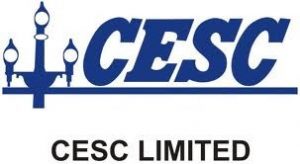 CESC 1899: The first demonstration of electric light in Calcutta was conducted on July 24, 1879 by P W Fleury & Co. In 1881, 36 electric lights lit up a Cotton Mill of Mackinnon & Mackenzie. The Government of Bengal passed the Calcutta Electric Lighting Act in 1895. The first license covered an area of 5.64 square miles (14.6 km2). On 7 January 1897 Kilburn & Co. secured the Calcutta electric lighting license as agents of The Indian Electric Company Limited. The company soon changed its name to the Calcutta Electric Supply Corporation Limited (CESC) in 1897; but this company was registered in London.
CESC 1899: The first demonstration of electric light in Calcutta was conducted on July 24, 1879 by P W Fleury & Co. In 1881, 36 electric lights lit up a Cotton Mill of Mackinnon & Mackenzie. The Government of Bengal passed the Calcutta Electric Lighting Act in 1895. The first license covered an area of 5.64 square miles (14.6 km2). On 7 January 1897 Kilburn & Co. secured the Calcutta electric lighting license as agents of The Indian Electric Company Limited. The company soon changed its name to the Calcutta Electric Supply Corporation Limited (CESC) in 1897; but this company was registered in London.
In 1970, the control of the Company was transferred from London to Calcutta. In 1978 it was renamed as ‘The Calcutta Electric Supply Corporation (India) Ltd’. The RPG (R.P.Goenka) Group got associated with The Calcutta Electric Supply Corporation (India) Limited from 1989, and the name was changed from The Calcutta Electric Supply Corporation (India) Limited to CESC Limited. In 2011, CESC became a part of the RP-Sanjiv Goenka Group, which was formed on 13 July 2011 by Sanjiv Goenka, the youngest son of Dr RP Goenka, the late founder of RPG Enterprises.
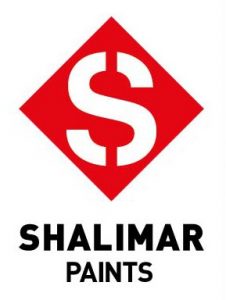 Shalimar Paints 1902: The history of Shalimar Paints describes the history of the paints industry in India and also in South East Asia. Shalimar Paints was founded in 1902 by two British entrepreneurs AN Turner and AC Wright as Shalimar Paints Colour & Varnish Ltd. In the same year, the company set up a large scale manufacturing plant in Howrah, West Bengal, the first such plant in entire South East Asia. In 1928, Pinchin Johnson & Associates of UK bought control from the British entrepreneurs AN Turner and AC Wright. In 1963, the company’s name was changed to Shalimar Paints Ltd. after Turner Morisson & Co stepped in as new management.
Shalimar Paints 1902: The history of Shalimar Paints describes the history of the paints industry in India and also in South East Asia. Shalimar Paints was founded in 1902 by two British entrepreneurs AN Turner and AC Wright as Shalimar Paints Colour & Varnish Ltd. In the same year, the company set up a large scale manufacturing plant in Howrah, West Bengal, the first such plant in entire South East Asia. In 1928, Pinchin Johnson & Associates of UK bought control from the British entrepreneurs AN Turner and AC Wright. In 1963, the company’s name was changed to Shalimar Paints Ltd. after Turner Morisson & Co stepped in as new management.
Today, the company is engaged in manufacturing and marketing of decorative paints and industrial coatings. Some of India’s iconic buildings and structures such as the Howrah Bridge, Rashtrapati Bhawan, Salt Lake Stadium, the building of All India Institute of Medical Sciences, and many others, have been, and continue to be painted with Shalimar Paints. In 2014, this century-old paint brand rejuvenated its logo and refreshed its positioning to connect with today’s consumers.
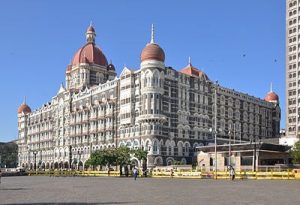 Hotel Taj Mahal Palace 1903: The hotel’s original building was commissioned by Tata and the hotel first opened its doors to guests on 16 December 1903. It is said that Jamshedji Tata decided to build the hotel after he was refused entry to one of the city’s grand hotels of the time, Watson Hotel, as it was restricted to “whites only”. However, this story has been refuted by some. The original Indian architects were Sitaram Khanderao Vaidya and D. N. Mirza, and the project was completed by an English engineer, W. A. Chambers. The builder was Khansaheb Sorabji Ruttonji Contractor who also designed and built its famous central floating staircase. The cost of construction was £250,000 (£127 million today). It’s worth mentioning here that during World War I the hotel was converted into a hospital with 600 beds. The Taj Mahal Tower, an additional wing of the hotel, was opened in 1973. It was designed by Melton Bekker. On 26 November 2008, in a series of attacks in Mumbai, this hotel as well as the Oberoi hotel was attacked by Lashkar-e-Toiba, an Islamist terrorist group, during which material damage, killing of guests, occurred including the destruction of the hotel’s roof in the shootout. Taj Mahal is the one of the oldest landmark of Mumbai.
Hotel Taj Mahal Palace 1903: The hotel’s original building was commissioned by Tata and the hotel first opened its doors to guests on 16 December 1903. It is said that Jamshedji Tata decided to build the hotel after he was refused entry to one of the city’s grand hotels of the time, Watson Hotel, as it was restricted to “whites only”. However, this story has been refuted by some. The original Indian architects were Sitaram Khanderao Vaidya and D. N. Mirza, and the project was completed by an English engineer, W. A. Chambers. The builder was Khansaheb Sorabji Ruttonji Contractor who also designed and built its famous central floating staircase. The cost of construction was £250,000 (£127 million today). It’s worth mentioning here that during World War I the hotel was converted into a hospital with 600 beds. The Taj Mahal Tower, an additional wing of the hotel, was opened in 1973. It was designed by Melton Bekker. On 26 November 2008, in a series of attacks in Mumbai, this hotel as well as the Oberoi hotel was attacked by Lashkar-e-Toiba, an Islamist terrorist group, during which material damage, killing of guests, occurred including the destruction of the hotel’s roof in the shootout. Taj Mahal is the one of the oldest landmark of Mumbai.
Friends it’s worth a mention here that Mr.Ratan Tata went all out to care for each and every employee of the hotel to help them recoup from the shock. All category of employees including those who had completed even 1 day as casuals were treated on duty during the time the hotel was closed. During the time the hotel was closed, the salaries were sent by money order. A psychiatric cell was established in collaboration with Tata Institute of Social Sciences to counsel those who needed such help. The thoughts and anxieties going on people’s mind were constantly tracked and where needed psychological help provided. Employee outreach centers were opened where all help, food, water, sanitation, first aid and counseling was provided. 1600 employees were covered by this facility. Every employee was assigned to one mentor and it was that person’s responsibility to act as a “single window” clearance for any help that the person required. Mr. Ratan Tata personally visited the families of all the 80 employees who in some manner – either through injury or getting killed – were affected. That’s the Tata cuture!!!
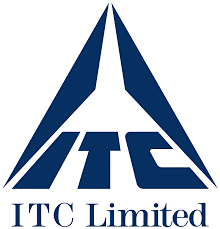 ITC Ltd 1910: It was established in 1910 as the Imperial Tobacco Company of India Limited, the company was renamed as the Indian Tobacco Company Limited in 1970 and further to I.T.C. Limited in 1974. The periods in the name were removed in September 2001 for the company to be renamed as ITC Ltd. The company completed 100 years in 2010 and as of 2012-13, had an annual turnover of US$8.31 billion and a market capitalization of US$45 billion. It employs over 25,000 people at more than 60 locations across India and is included in Forbes 2000 list. Today ITC is one of the renowned business conglomerates globally. Its diversified business includes five segments: Fast Moving Consumer Goods (FMCG), Hotels, Paperboards & Packaging, Agri Business & Information Technology.
ITC Ltd 1910: It was established in 1910 as the Imperial Tobacco Company of India Limited, the company was renamed as the Indian Tobacco Company Limited in 1970 and further to I.T.C. Limited in 1974. The periods in the name were removed in September 2001 for the company to be renamed as ITC Ltd. The company completed 100 years in 2010 and as of 2012-13, had an annual turnover of US$8.31 billion and a market capitalization of US$45 billion. It employs over 25,000 people at more than 60 locations across India and is included in Forbes 2000 list. Today ITC is one of the renowned business conglomerates globally. Its diversified business includes five segments: Fast Moving Consumer Goods (FMCG), Hotels, Paperboards & Packaging, Agri Business & Information Technology.
ITC’s e-Choupal initiative is designed to make the power of the Internet available to Indian farmers. The company places computers with Internet access in rural farming villages, serving both as a social gathering place for exchange of information (choupal means gathering place in Hindi) and an e-commerce hub. As of July 2010, 6,500 e-Choupal services are operating across 10 states reach more than 4 million farmers in about 40,000 villages. The potential of e-Choupal is also being tested through pilot projects in healthcare, educational services, water management and cattle health management. In 2008, this initiative was recognized in the list of “Innovations to make markets more inclusive for the poor” in World Development Report Sep-2008 by the World Bank.
Our respect for corporate brands fluctuates due to their management change and product offering. But, let’s not forget that these old corporations have been the strong pillars of our economy. Credit goes to these organizations for developing a steady business culture.














































